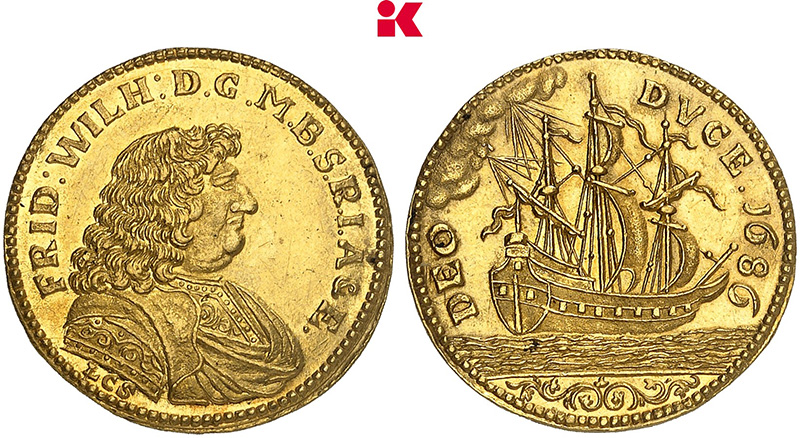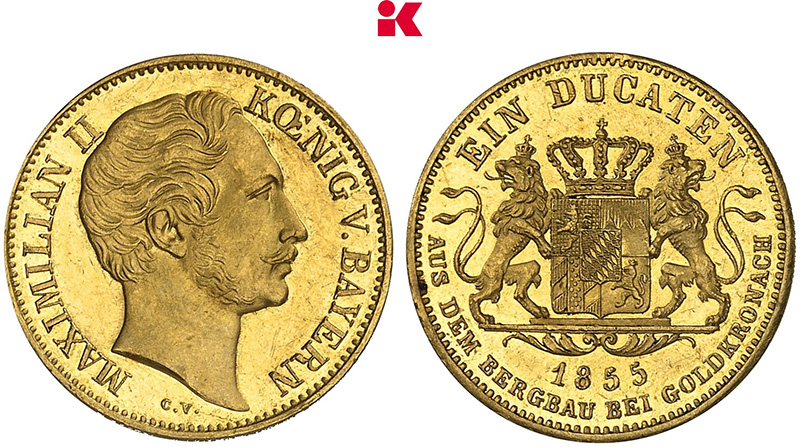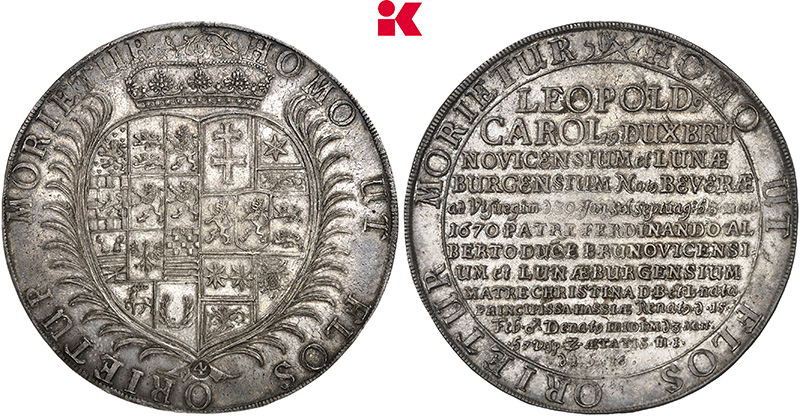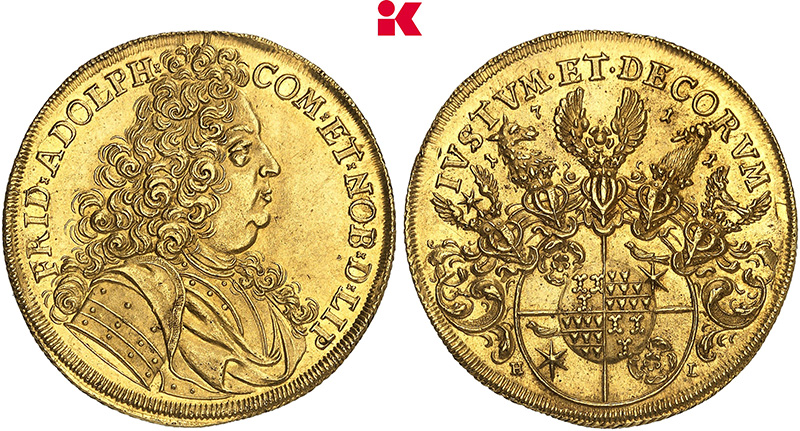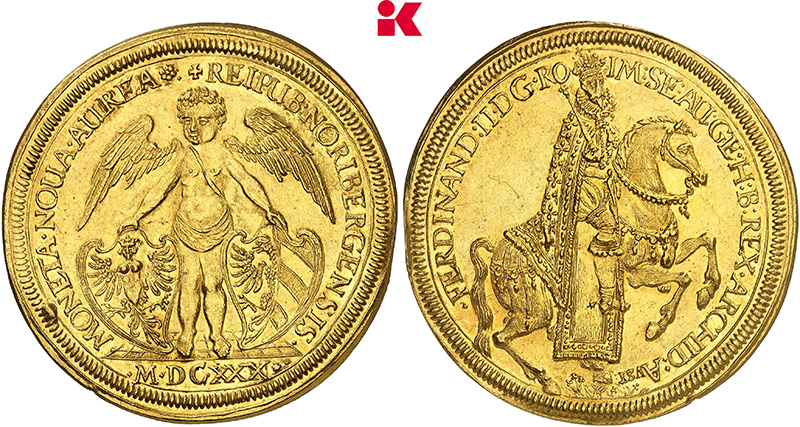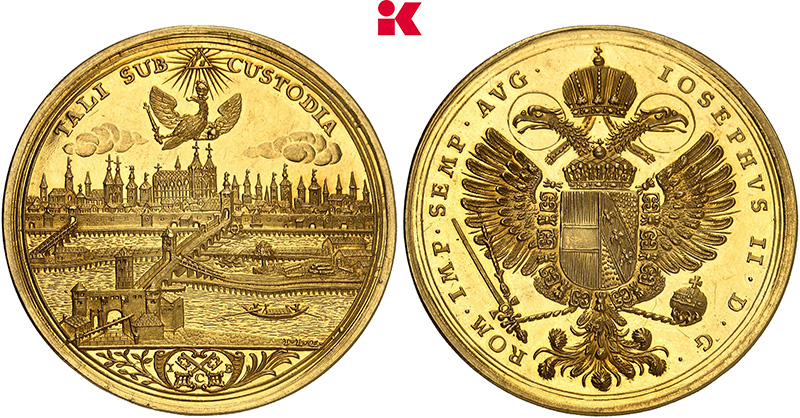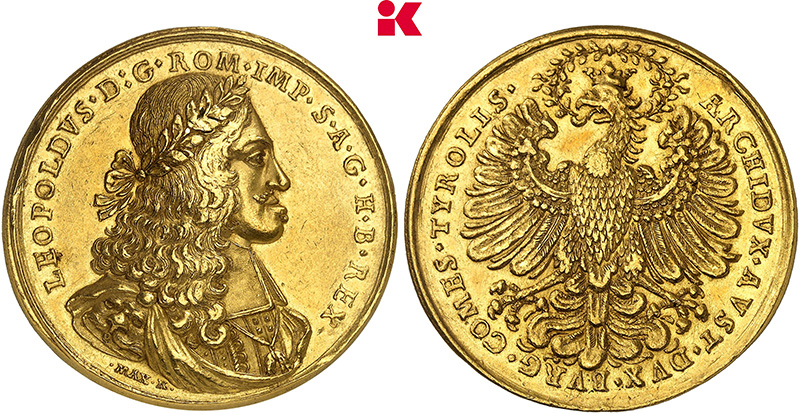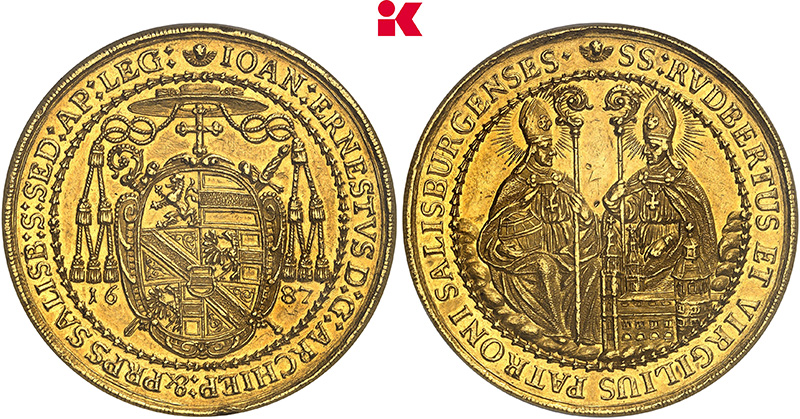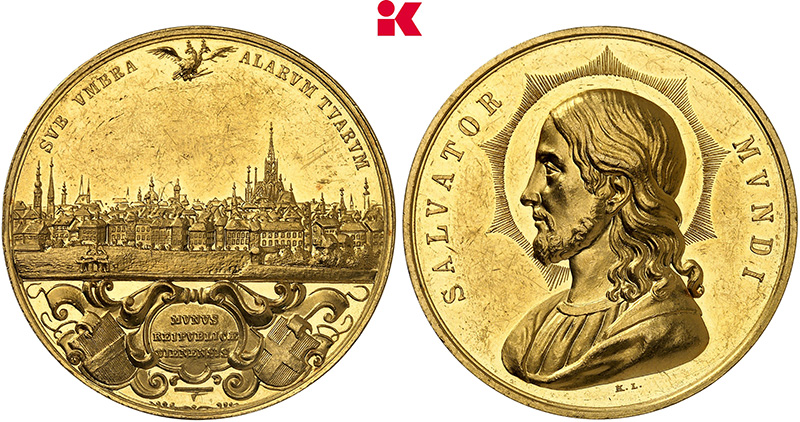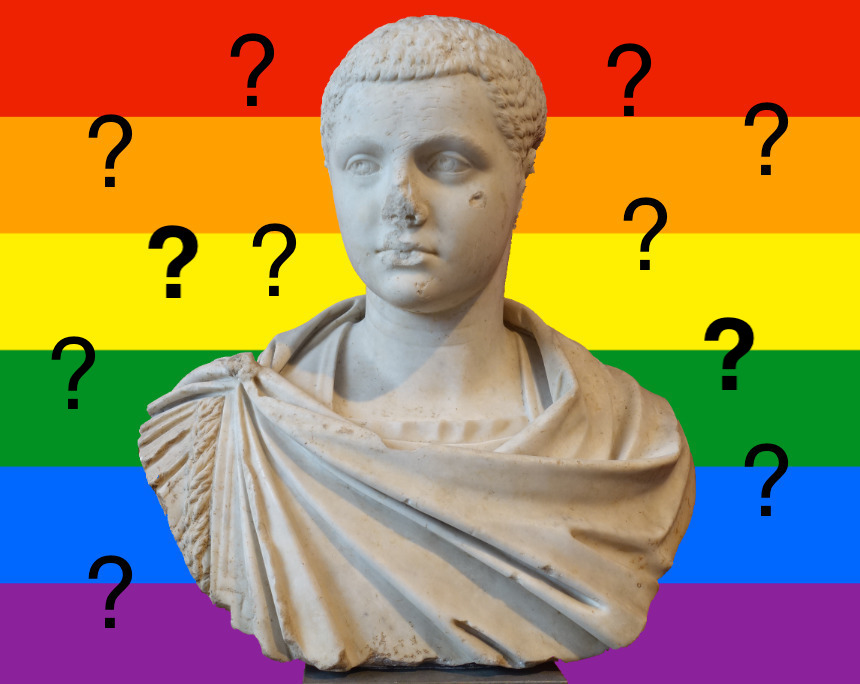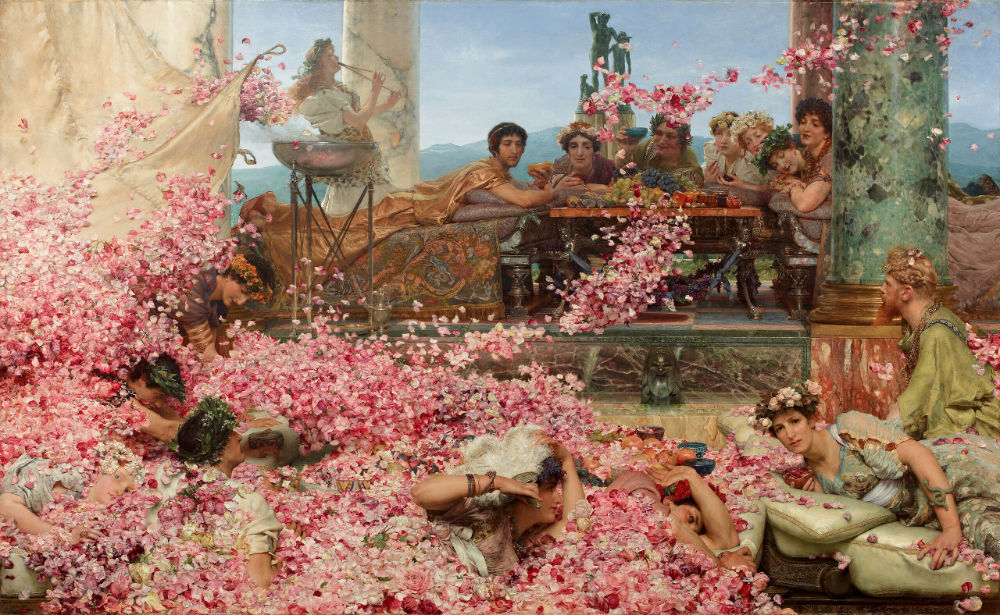Elagabalus’ New Transgender Identity and Its Consequences on the Coin Trade
by Ursula Kampmann, translated by Maike Meßmann
Had you ever heard of the North Hertfordshire Museum a month ago? I had not. Although I actually know a great many museums that focus on numismatics and ancient art. The reason that I was not familiar with this institution might be that the North Hertfordshire Museum is a multidisciplinary museum that – besides archaeology and ethnography – also deals with football, pharmaceutics, natural history – and numismatics.
Content
The museum website tells us that the numismatic collection has existed since 1914 and includes the typical Celtic and Roman coins, in addition to an extensive series of British pieces and a small run of European coinage. The museum does not afford to hire a numismatist. Why would they? After all, even politicians in North Hertfordshire know enough about history to finally put an end to a great injustice: Keith Hoskins, Councillor and Executive Member for Enterprise and Arts, announced that the local museum wants to finally restore the true identity of Roman Emperor Elagabalus. After all, this emperor was trans – at least according to Hoskins. He owes this insight to Ollie Burns, a graduate of the University of Birmingham. The latter authored a dissertation on Elagabalus, in which he drew this fundamentally new conclusion.
Based on a text by Cassius Dio, he interpreted the gender identity of Elagabalus as follows: “This particular extract [from Cassius Dio, Book 80] suggests that while Elagabalus married and indeed had sex with women, this was only so that they could learn how women acted, in order to replicate this with male partners, which would imply that they were homosexual. In terms of gender identity, Elagabalus’ habit of playing a female prostitute to solicit men shows a rejection of traditional Roman male identity, wherein men (especially those of rank) were seen as weak and effeminate if they allowed themselves to be penetrated by other men. Elagabalus was also known to have married a man, the charioteer and former slave Hierocles, and they loved being referred to as Hierocles’ wife or mistress. The emperor is also reported to have frequently worn wigs and makeup, preferred to be called ‘domina’ (lady) over ‘dominus’ (lord), and even offered vast sums of money to any physician who could give them a vagina.”
Hermaphrodites and Transgender Identity
Well, people in ancient times were far more liberal about matters of sexuality than our prudish contemporaries would like to imagine. While it took me more than 40 years to discover that there are people who show characteristics of both sexes at birth, ancient sculptors have always celebrated the beauty of the bodies of hermaphrodites. And the Greeks also talked about transgender identities. After all, they believed the mythical prophet Tiresias to have lived both as a man and a woman. Therefore, Zeus and Hera asked them for advice when they had a marital dispute about who enjoyed sex more, the man or the woman.
When we look at ancient texts without the censorship of the 19th and 20th centuries, we will notice time and again that the authors were very open about topics that are virtual taboos in our age. So what should we think of Cassius Dio and his description of Elagabalus as a trans woman in this context?
Why Did Cassius Dio Write about Elagabalus’ Sex Life to Begin With?
The fundamental question is this: why did Cassius Dio keep going on about the rumours about Elagabalus in so much detail? Any specialised historian who is able of analysing a source critically has the answer: ancient historians were not familiar with the modern psychological concept of a multi-faceted personality. To them, an emperor was either a virtuous role model or a criminal who deserved nothing but the damnatio memoriae, i.e., the political decision to deliberately throw him and his rule into oblivion.
Elagabalus was officially put into the second category. After his assassination in 222 AD, the Senate issued a damnatio memoriae against him.
As a result, historians were only allowed to characterise Elagabalus as an emperor of the very worst qualities. We can read exactly that in Cassius Dio’s introduction to Elagabalus: “I would not have recorded the life of Heliogabalus Antoninus … so that nobody would have ever known that he had been a Roman emperor, if the same empire had not previously witnessed Caligulas and Neros and Vitelliusses. But as the same soil cultivates poisonous plants alongside grain and other crops, attentive readers will be able to create a balance by reading Augustus, Trajan, Vespasian, Hadrian, Pius, Titus, and Marcus in comparison to this devastating tyrant.”
Thus, Cassius Dio’s chronicle of Elagabalus is that of a typical tyrant. And to this intent, Cassius Dio creatively mixed various common motifs of tyrants, including their “female” behaviour. Great emperors were male, loved the military and showed off their courage. Bad emperors had female characteristics, gave into excess and failed in face of danger. Of course we see things differently today. Good for us!
We also deal differently with quotes. To Roman authors, adding a quotation to their text did not mean that an emperor had actually made such a statement at some point. Quotations were meant to illustrate what the author believed them to be capable of saying. It was a stylistic means up to the author’s imagination! Believe me, even if Elagabalus made a lot of political mistakes, it is highly unlikely for him to have been as stupid as to express a wish that would have made him a liability and would put an end to his reign.
Briefly said: Cassius Dio’s work was full of libel to deliberately discredit and character assassinate the former ruler! And if the North Hertfordshire Museum officially treats Elagabalus as a woman, they fall victim to the smear campaign of an ancient politician. Elagabalus would have been outraged by this. And the fact that many people consider trans people to be cool and fascinating today probably would not have interested Elagabalus at all.
Consequences of the Transgender Debate on the Coin Trade
Well, we could leave it at this and simply consider the transgender debate about Elagabalus to be a successful PR campaign conducted by a small regional museum. However, the problem is that the public is so unaware of historical facts that they are inclined to believe this nonsense. By the way, this is not a new phenomenon either! People have always preferred to believe in scandal than to keep digging for truth. For example, it was not until the past five decades that many of the accounts about Suetonius and Tacitus were debunked by historians.
And thus, hardly anyone is questioning the plausibility of Ollie Burn’s hypothesis. And that is no surprise! Most of those involved in the debate probably only learned recently that there was an emperor called Elagabalus who minted coins.
Caution! Sh*tstorm Incoming
What is problematic about this phenomenon is that most recently, it has become a common occurrence for an ignorant public to be keen to redeem historical injustice – namely without paying too much attention to annoying historical details. I can already see how every single museum and every single coin dealer will find themselves pilloried by the moral guardians of the LGBTQ+ movement just because those in charge used the wrong pronoun in their coin descriptions about allegedly trans Elagabalus. I can tell you from experience that it is simply impossible to argue with a sh*tstorm.
A Great Marketing Trick
On the other hand, I do realise that this debate provides us with an ingenious marketing tool. The coins of Emperor Hadrian are proof to this. They are sold at much higher prices than those of his colleagues, simply because Hadrian is considered an icon of the gay movement.
This means that there will be colleagues who will take advantage of the rainbow label to sell out their stock of Elagabalus coins at record prices. I can already see advertisements popping up on the usual forums, or a small table with coins for every gender identity at the next Zurich Pride.
Of course, that last sentence was rather meant as a joke. And yet we all know that there are still coin shops that advertise spintriae as brothel tokens because this means they can realise higher prices. A higher price or historical accuracy? Most will opt for the former.
So, What Was Elagabalus’ Gender?
How should we deal with this hype about the gender identity of Elagabalus? Well, let us hush it up and stick to the correct pronouns. Let us stay in the background and duck away from sh*tstorm, let us protect our historical integrity. Not because we are homophobic or anti-trans, but because there is such a thing called source criticism. Let us rather fight for equal respect for all people, regardless of race, nationality, gender, age or religion HERE AND NOW. And let us lead by example. If we do so, there will no longer be the need to dig in the past to supposedly restore the dignity of some people who can no longer defend themselves against it.







